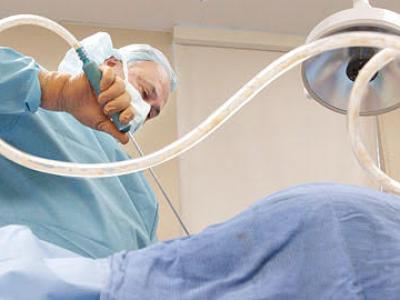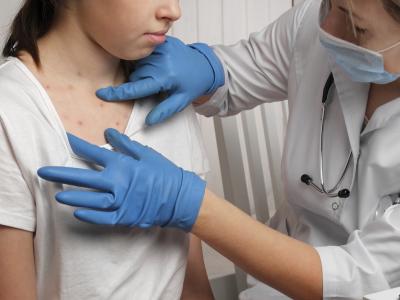Our weekly wrap-up of antimicrobial stewardship & antimicrobial resistance scans
Study finds antibiotics commonly dispensed without prescription in Africa
A systematic review and meta-analysis of 23 studies has found that dispensing of non-prescribed antibiotics outside of hospital settings is common in Sub-Saharan African countries, researchers reported yesterday in Antimicrobial Resistance and Infection Control.
To estimate the proportion of non-prescription antibiotic requests or consults that resulted in provision of antibiotics from community drug retail outlets (CDROs) in Sub-Saharan Africa, researchers from the University of Queensland, Australia, and the University of Gondar in Ethiopia conducted a literature search that yielded 23 studies, including 7 cross-sectional questionnaire-based surveys and 16 cross-sectional client-based studies. The studies were conducted in Ethiopia, Tanzania, Kenya, Sudan, Zimbabwe, Zambia, Ghana, Eritrea, Cameroon, and Uganda. The CDROs investigated included pharmacies, drug stores or shop, rural drug vendors, and accredited drug dispensing outlets.
A random-effect model meta-analysis of the data from these studies found that the overall pooled proportion of non-prescription antibiotic requests that resulted in the supply of antibiotics was 69%, ranging from 8% in Zimbabwe to 94% in Uganda. Upper respiratory tract infections and acute diarrhea were the most frequently presented case scenarios, and amoxicillin (26.5%) and co-trimoxazole (19.8%) were the most frequently dispensed antibiotics to treat those symptoms.
The study also found that non-prescription sale of antibiotics increased in Ethiopia, Kenya, Tanzania, and Zimbabwe even after those countries had adopted national action plans to combat antimicrobial resistance.
"Ease of access to and overuse can potentially accelerate the emergence of antibiotic resistance to few yet lifesaving antibiotics available in the region," the authors concluded. "Our review highlights the need for stringent enforcement of existing policies and/or enacting new regulatory frameworks that would regulate antibiotic supply, and continuous training and educational support for pharmacy personnel (e.g. pharmacists, pharmacy assistants) regarding judicious use of antibiotics and the importance of antimicrobial stewardship."
Jan 14 Antimicrob Resist Infect Control study
Study finds high rate of inpatient, outpatient antibiotic prescribing in Iran
In another study published yesterday in Antimicrobial Resistance and Infection Control, researchers reported high rates of inpatient and outpatient antibiotic prescribing in Iran.
The review and meta-analysis by Iranian and Dutch researchers looked at 54 studies published from 1995 through 2016, including 39 on outpatient prescribing and 15 on inpatient prescribing. The median rate of antibiotic prescribing in inpatient settings was 68.2%, with antibiotics prescribed for 39.5% of patients on all wards, 66% of patients on pediatric wards, and 75.3% of patients in intensive care units. The most commonly prescribed inpatient antibiotics were cephalosporins, penicillins, and carbapenems.
The median rate of antibiotic prescribing in outpatient settings was 45.3%. The mostly commonly prescribed outpatient antibiotics were penicillins, cephalosporins, macrolides, and aminoglycosides.
The study also found that traditional educational interventions to promote judicious antibiotic prescribing showed no significant effect on reducing the antibiotic prescribing rate.
The authors of the study say their findings highlight the need for Iranian policymakers to develop a national plan to improve antibiotic prescribing and consider the use of information technology–based interventions, such as clinical decision support systems, electronic health records, and electronic-based feedback on physician prescribing habits.
Jan 14 Antimicrob Resist Infect Control study
Study finds high antibiotic use in Indian hospitals
Originally published by CIDRAP News Jan 14
A point-prevalence study conducted in five hospitals in India shows high use of antibiotics in admitted patients, with a considerable proportion coming from a category of broad-spectrum drugs with a higher potential for promoting antibiotic resistance, Indian researchers reported in the Journal of Antimicrobial Chemotherapy.
The survey, conducted over 2 weeks in May 2019 at five tertiary care centers in India, aimed to collect data on antibiotic prescribing patterns and practices in the country's hospitals, which are in the nascent stages of developing antimicrobial stewardship programs. The researchers collected data on all admitted patients in wards and intensive care units over the study period to determine indications for antibiotic use and the percentage of patients on antibiotics, receiving more than one antibiotic, and on antibiotics from the Watch and Reserve categories of the World Health Organization's Essential Medicines List.
A total of 3,473 patients were included in the study. Of these patients, 1,747 (50.3%) were on antibiotics, with 46.9% being treated with two or more antibiotics. The most common indications for antibiotic use were community-acquired infections (40.6%), surgical prophylaxis (32.6%), and hospital-acquired infections (13.5%).
Drugs from the Watch category accounted for 80.6% of prescriptions, with third-generation cephalosporins being the most widely used. Carbapenems, considered Reserve antibiotics, accounted for 11.3% of antibiotic use.
The WHO's Access, Watch, and Reserve antibiotic classification framework was introduced in 2017 to provide an indirect indication of the appropriateness of antibiotic use at national and global levels. Watch antibiotics are broader-spectrum drugs that are not recommended for routine use because of their higher potential for promoting resistance, while Reserve antibiotics are considered last-resort antibiotics that should be used only for multidrug-resistant infections. The authors of the study say it is difficult to know whether the use of these antibiotics was appropriate or not.
"The findings of the survey were helpful in generating baseline data for identifying strategies for interventions directed at reducing antimicrobial use and for evaluating the impact of future interventions," the authors of the study wrote.
Jan 11 J Antimicrob Chemother abstract
High burden, increased resistance noted in invasive E coli infections
Originally published by CIDRAP News Jan 11
A new study led by researchers with Pfizer shows a substantial burden of extraintestinal invasive Escherichia coli infections (IEIs) in the United States, with increasing resistance to extended-spectrum cephalosporins.
In the study, published late last week in Clinical Infectious Diseases, researchers examined data from the Premier Healthcare Database, looking at all adult inpatient and hospital-based outpatient visits with continuous microbiology data submission from Jan 1, 2009, through Dec 31, 2016, for IEI events, which were defined as having a positive E coli culture from blood, urine, cerebrospinal fluid, or other normally sterile sites. The main outcome variables included count and prevalence of IEI events, risk of IEI occurrence, and the antibiotic resistance pattern of related IEI isolates.
The researchers analyzed more than 144.9 million hospital visits among more than 37.2 million patients during the study period and found that 71,909 IEI events occurred among 67,583 patients, corresponding to an IEI prevalence of 0.50 events per 1,000 visits and 1.82/1,000 patients. Among IEI patients identified, 58,168 (86%) were inpatients.
Prevalence among adults increased with age, ranging from 0.23/1,000 among patients 18 to 49 years to 1.3/1,000 among those 85 and over. Overall, 26.9/1,000 patients with IEI had a recurrent IEI in the 12 months following their initial infection. Urosepsis was the most common IEI, accounting for 66% of all infections, followed by bloodstream infections (22.1%).
Among all IEI cases with antibiotic susceptibility testing, 28.22% were resistant to fluoroquinolones, 9.18% were resistant to extended-spectrum cephalosporins, and 0.14% were resistant to carbapenems. Resistance to extended-spectrum cephalosporins increased from 5.46% to 12.97% during the study period.
"This high burden and acuity indicate that additional strategies for prevention are needed for IEI," the authors of the study wrote. "More research is needed to find effective ways to prevent these potentially deadly infections."
Jan 9 Clin Infect Dis study
Trial: Oral antibiotics alone not enough for uncomplicated appendicitis
Originally published by CIDRAP News Jan 11
The results of a randomized clinical trial involving adults with uncomplicated appendicitis show that treatment with oral antibiotics alone met the prespecified threshold for treatment success but failed to demonstrate noninferiority to intravenous (IV) antibiotics followed by oral antibiotics, researchers in Finland reported today in JAMA.
The open-label, noninferiority randomized trial was conducted from April 2017 to November 2018 in nine Finnish hospitals and included 599 patients with computed tomography–confirmed uncomplicated acute appendicitis. The purpose of the trial was to see whether oral antibiotics, which can be taken on an outpatient basis, could be an alternative to a combination of oral and IV antibiotics, which require hospital administration to ensure patient safety. An oral antibiotic regimen would shorten hospital stays and could enhance cost savings and patient satisfaction.
During the trial, a total of 295 patients received oral moxifloxacin for 7 days and 288 received IV ertapenem for 2 days followed by oral levofloxacin for 5 days. The primary end point was treatment success of greater than 65% for both groups. Treatment success was defined as hospital discharge without surgery and recurrent appendicitis during 1-year follow-up. The noninferiority margin was -6%.
The results showed that the treatment success rate was 70.2% among patients in the oral antibiotics group and 73.8% for patients treated with IV followed by oral antibiotics, for a difference of -3.6%. The confidence interval of the difference (-9.7%) exceeded the predefined noninferiority definition of a lower limit of -6%.
Despite the results, the authors of the study suggest the treatment success rate for oral antibiotics be considered during the COVID-19 pandemic in order to free up hospital resources at a time of bed capacity shortages and to reduce the risk of COVID-19 exposure for patients with uncomplicated appendicitis.
In an accompanying commentary, two experts with Nationwide Children's Hospital in Columbus, Ohio, wrote, "Additional studies related to nonoperative management of appendicitis no longer need to focus on the effectiveness of the treatment, but on further defining optimal treatment strategies. This includes antibiotic duration, mode of antibiotic delivery, the need for in-patient observation, and how to disseminate and promote implementation of nonoperative treatment choices across various practice types and patient demographics.
Jan 11 JAMA study
Jan 11 JAMA commentary













